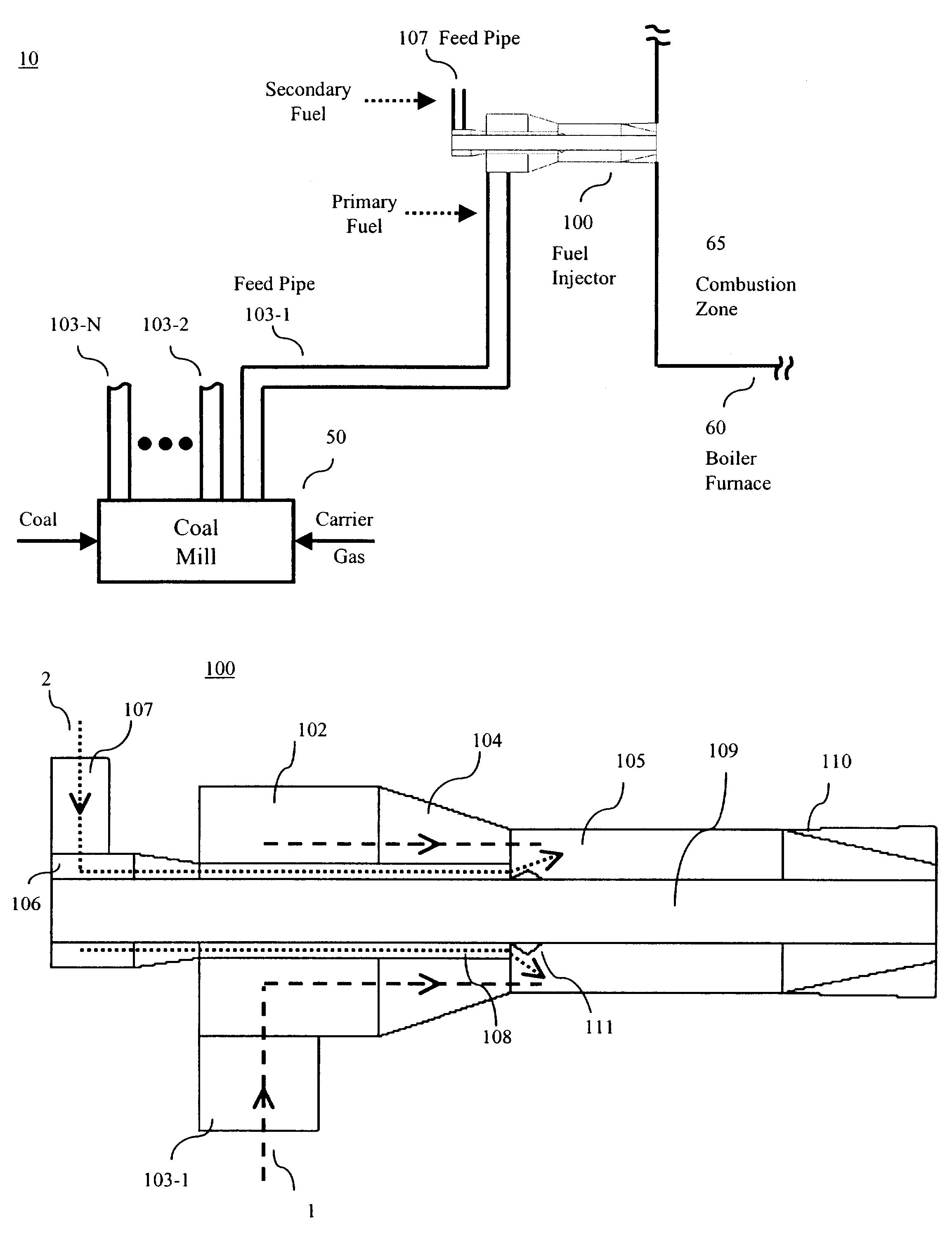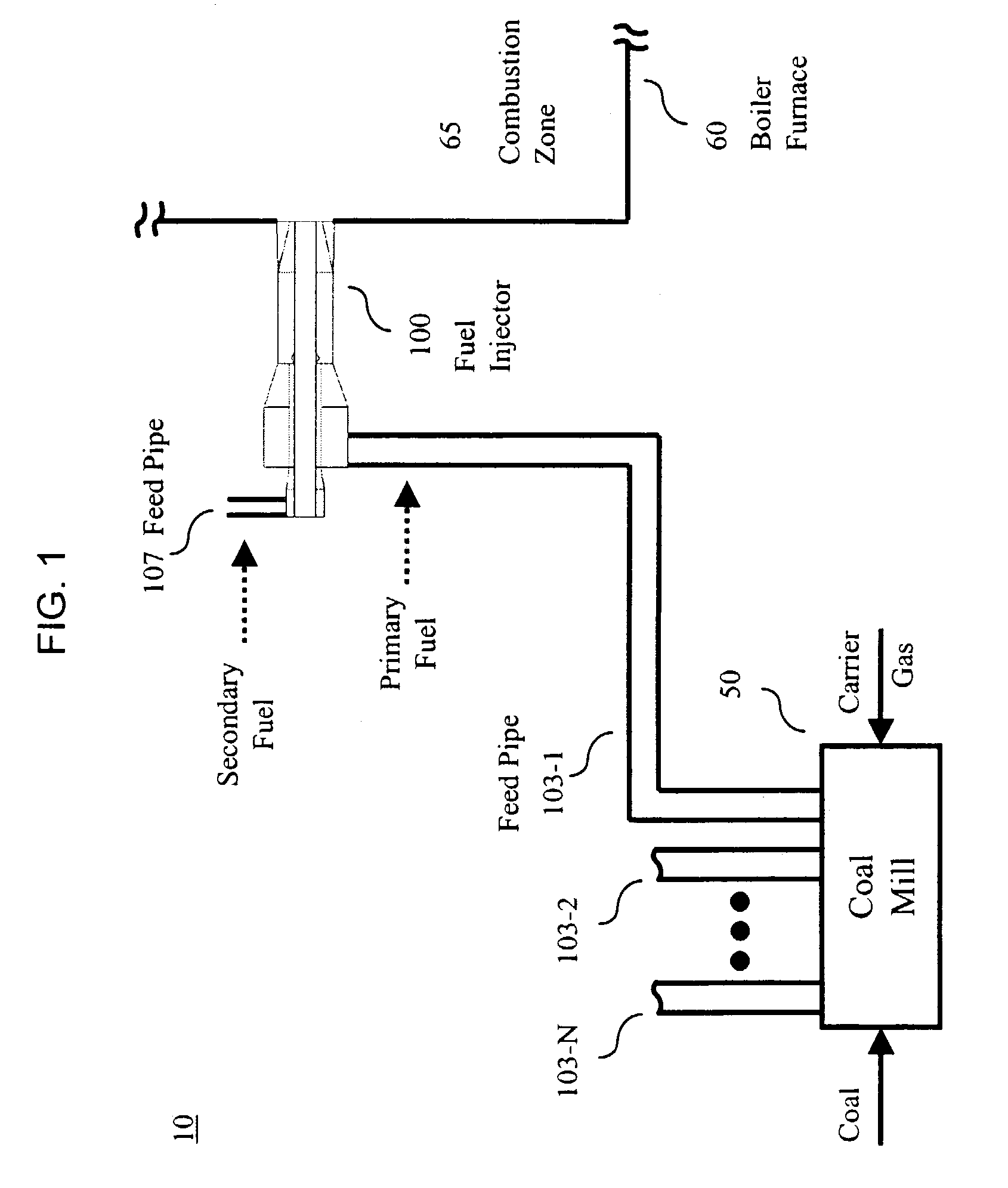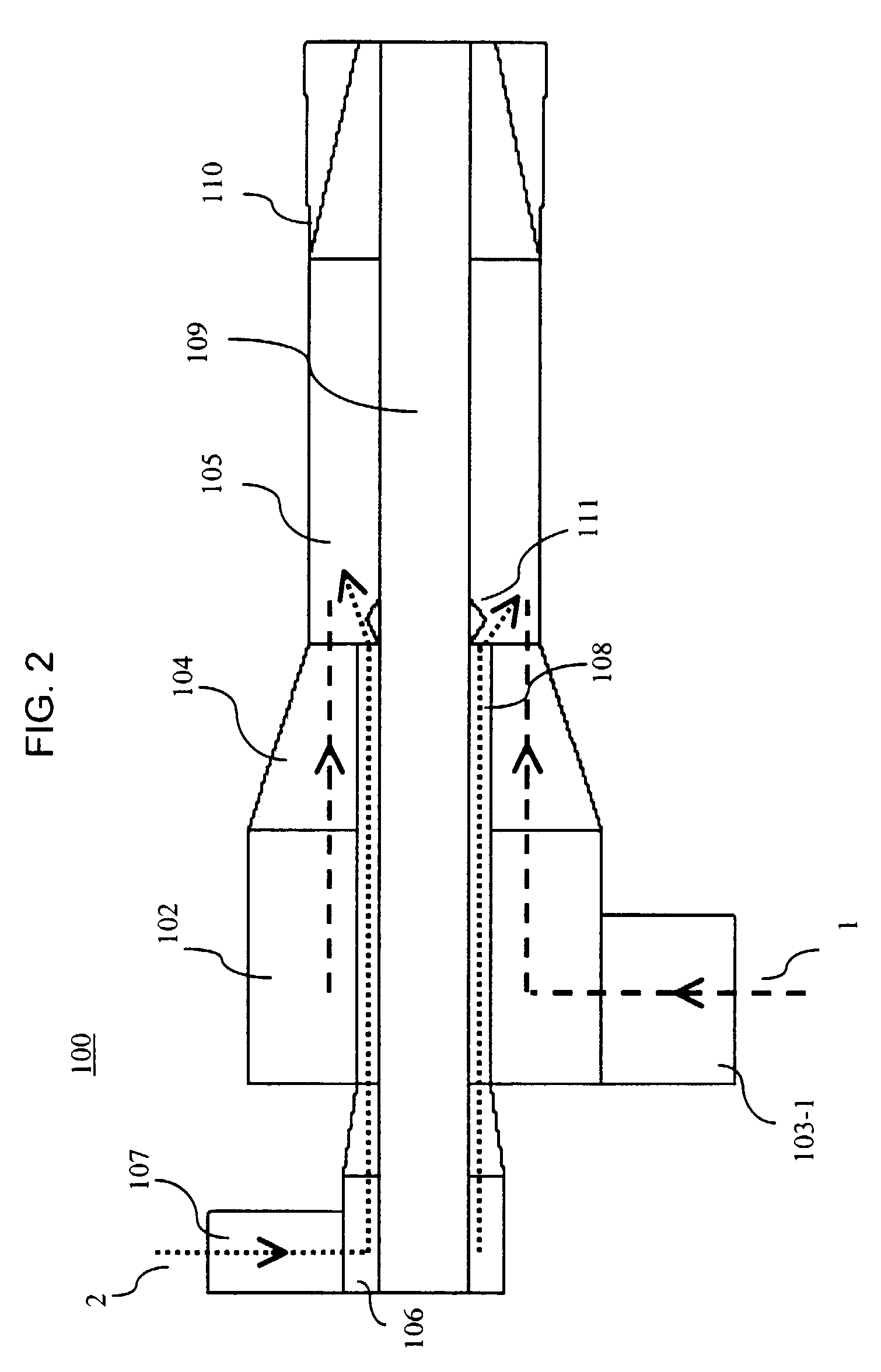Burner system and method for mixing a plurality of solid fuels
a burner system and solid fuel technology, applied in the direction of incinerator equipment, combustion types, lighting and heating apparatus, etc., can solve the problems of limited effectiveness of using biomass fuel as a means of reducing nosub>x /sub>emission, ineffective method of cofiring, etc., to enhance the mixing of secondary solid fuel and enhance the effect of secondary solid fuel
- Summary
- Abstract
- Description
- Claims
- Application Information
AI Technical Summary
Benefits of technology
Problems solved by technology
Method used
Image
Examples
Embodiment Construction
[0025]Other than the inventive concept, the apparatus and methods for a cofiring burner system are well known and are not described further herein. For example, other than the inventive concept, a fuel injector is a portion of the combustion equipment that injects the fuels and carrier gas into a combustion zone. Also, like numbers on different figures represent similar elements.
[0026]An illustrative cofiring burner system in accordance with the principles of the invention is shown in FIG. 1. Cofiring burner system 10 comprises a coal mill (fuel preparation plant) 50, a number of feed pipes, 103-1 to 103-N (primary feed pipes), and 107 (representative of secondary feed pipes), a fuel injector 100 and a boiler furnace, of which a portion 60 is shown (hereafter boiler furnace 60) having a combustion zone 65. Illustratively a primary fuel, e.g., coal, and a transport medium (or carrier gas) (e.g., air) are provided to a fuel preparation plant as represented by coal mill 50, which pulve...
PUM
 Login to View More
Login to View More Abstract
Description
Claims
Application Information
 Login to View More
Login to View More - R&D
- Intellectual Property
- Life Sciences
- Materials
- Tech Scout
- Unparalleled Data Quality
- Higher Quality Content
- 60% Fewer Hallucinations
Browse by: Latest US Patents, China's latest patents, Technical Efficacy Thesaurus, Application Domain, Technology Topic, Popular Technical Reports.
© 2025 PatSnap. All rights reserved.Legal|Privacy policy|Modern Slavery Act Transparency Statement|Sitemap|About US| Contact US: help@patsnap.com



